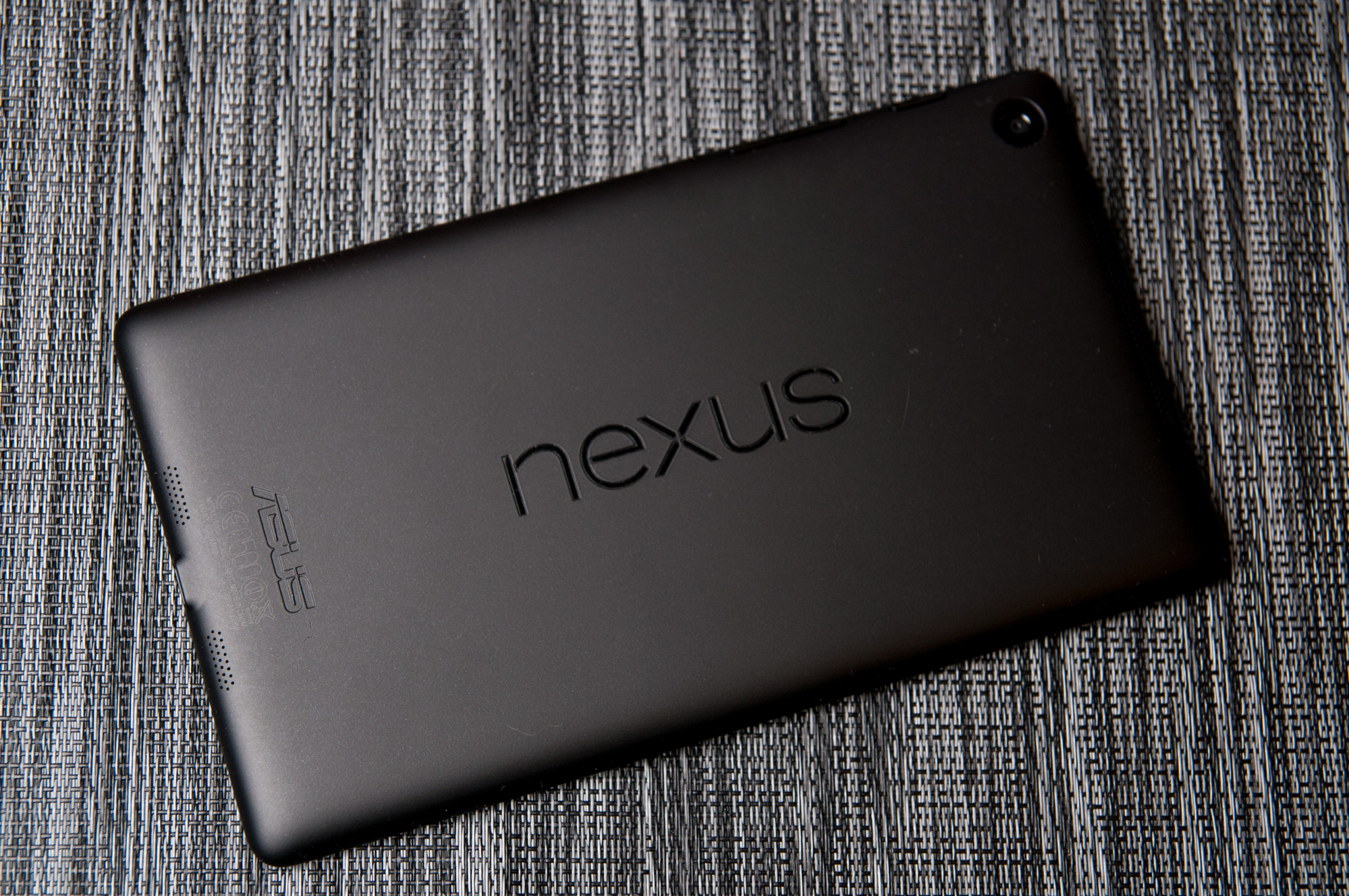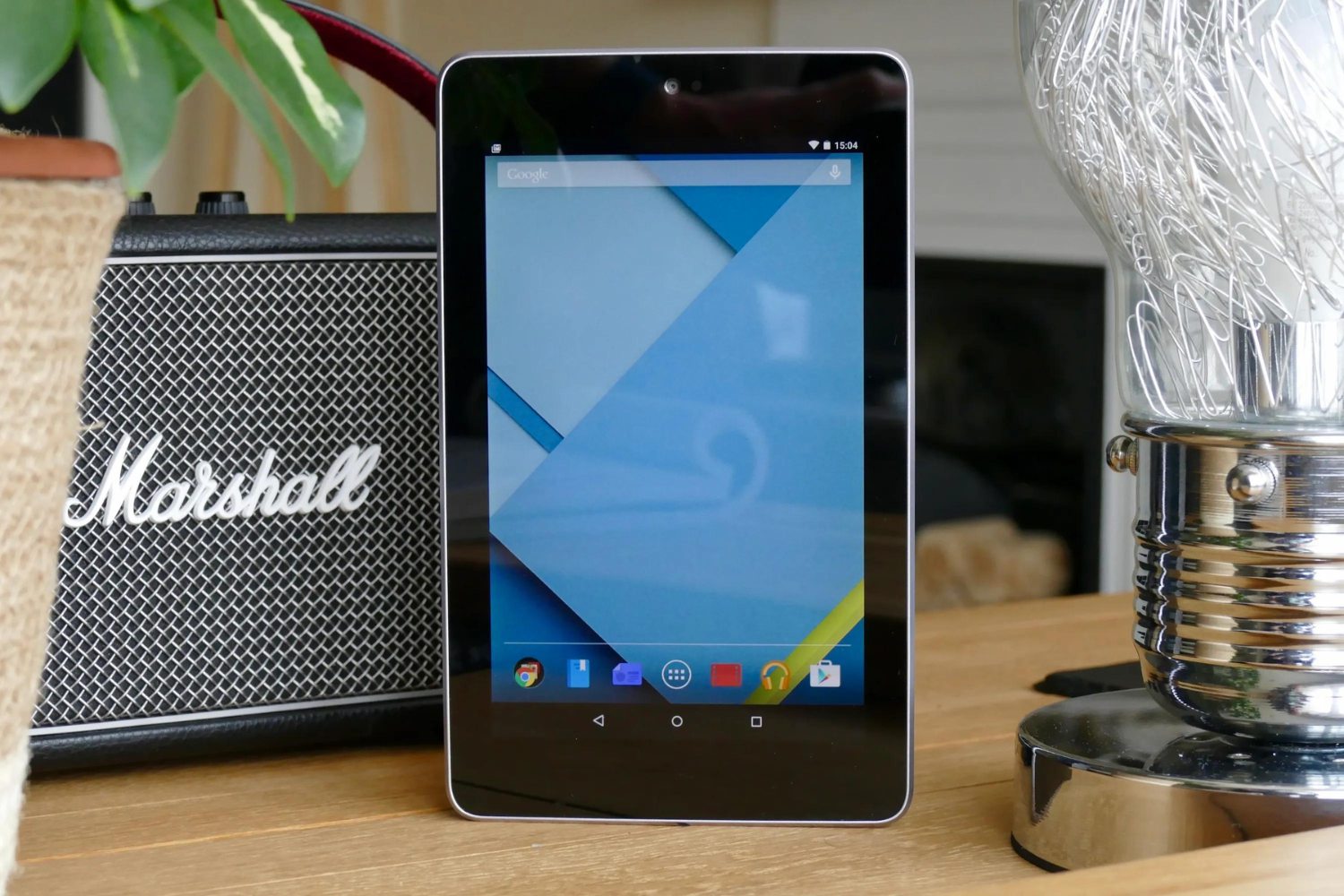Introduction
A Nexus tablet can be a valuable and versatile device, serving as a portable entertainment center, a productivity tool, and a gateway to the digital world. However, there may come a time when you need to reset your Nexus tablet. Whether you want to fix performance issues, clear storage space, or prepare the device for resale, resetting your Nexus tablet can help you achieve your goal.
In this article, we will explore the various methods to reset a Nexus tablet effectively. We will cover how to back up your important data before performing a reset, as well as step-by-step instructions for resetting your Nexus tablet using the settings menu or the recovery mode. We will also provide troubleshooting tips to address any potential issues you may encounter during the process.
Resetting a Nexus tablet should be approached with caution, as it will erase all data and restore the device to its factory settings. Therefore, it is crucial to back up any important files, such as photos, documents, and app data, to prevent permanent loss.
Whether you are a first-time Nexus tablet user or a seasoned tech enthusiast, this guide will help you navigate the process of resetting your Nexus tablet with ease and confidence.
Reasons for Resetting a Nexus Tablet
There are several reasons why you may need to reset your Nexus tablet. Understanding these reasons will help you determine whether a reset is necessary and how it can benefit you. Below are some common scenarios where resetting a Nexus tablet is recommended:
- Performance Issues: Over time, your Nexus tablet may start to experience slower performance, lag, or freezing. This can be due to a cluttered system, unnecessary apps running in the background, or outdated software. Resetting the tablet can help resolve these issues and restore it to its original speed and responsiveness.
- Software Glitches: Sometimes, software glitches can cause apps to crash, the tablet to freeze, or unusual behavior to occur. Resetting the tablet can help resolve these glitches by clearing out temporary files and resetting the system.
- Excessive Storage Usage: If your Nexus tablet is running out of storage space or you have accumulated a large amount of unnecessary files and data, a reset can help free up space and improve overall storage management.
- Preparing for Resale: If you plan to sell or give away your Nexus tablet, resetting it ensures that your personal data is securely erased. This includes your accounts, passwords, and any personal information stored on the device.
- Forgot Lock Screen Password: If you have forgotten your lock screen password or pattern, a reset may be necessary to regain access to your Nexus tablet. However, keep in mind that this will erase all data on the device, so it is crucial to have a backup of any important data before proceeding.
By resetting your Nexus tablet, you can address these issues and start with a clean slate. It allows you to optimize performance, improve storage space, and ensure your personal information is not accessible to anyone else.
Next, we will discuss the important step of backing up your data before resetting your Nexus tablet, to ensure that you don’t lose any important files in the process.
Backing Up Important Data
Before resetting your Nexus tablet, it is crucial to back up any important data to ensure that you don’t lose any files during the process. Here are some steps to help you backup your important data:
- Photos and Videos: Connect your Nexus tablet to your computer via USB, and simply copy and paste the files from your tablet’s storage to your computer. Alternatively, you can utilize cloud storage services like Google Photos or Dropbox to automatically backup your media files.
- Contacts and Calendar: If your contacts and calendar are synced with your Google account, they will be automatically backed up. You can verify this by going to “Settings” on your Nexus tablet, selecting “Accounts,” and ensuring that your Google account is selected for syncing.
- App Data and Settings: Many apps, such as productivity tools or note-taking apps, offer built-in backup options. Check within each app’s settings to see if you can backup your data to Google Drive or another cloud storage service. If not, consider manually exporting important data or taking screenshots for reference later.
- Messages and Call Logs: There are several apps available on the Google Play Store that allow you to backup your text messages and call logs. Research and install a trusted app of your choice, and follow the instructions to perform a backup of your messages and call logs.
- Documents and Files: Use cloud storage services such as Google Drive, Dropbox, or OneDrive to backup your important documents and files. Simply upload them to the cloud storage provider of your choice and ensure that they are synced and accessible from other devices.
By backing up your important data, you can have peace of mind knowing that your files are safely stored and can be easily restored after resetting your Nexus tablet. Take the time to go through each category mentioned above and ensure that all your essential data is properly backed up.
Now that you have safeguarded your data, let’s explore the different methods to reset your Nexus tablet, starting with resetting it using the settings menu.
Resetting a Nexus Tablet using the Settings Menu
If you have access to the settings menu on your Nexus tablet, resetting it is a straightforward process. Follow the step-by-step instructions below to reset your Nexus tablet using the settings menu:
- Open the “Settings” app on your Nexus tablet. You can usually find it in the app drawer or by swiping down from the top of the screen and tapping the gear icon.
- Scroll down and tap on “System” or “System & updates,” depending on your device model.
- Select “Reset options” or “Reset” from the list of options.
- Tap on “Erase all data (factory reset)” or a similar selection. Keep in mind that this will erase all files, apps, and settings on your Nexus tablet, so make sure you have backed up your important data beforehand.
- Review the warning message that appears and confirm your selection.
- Enter your lock screen PIN, pattern, or password if prompted.
- Finally, tap on “Erase everything” or “Reset tablet” to initiate the reset process.
Once the reset is initiated, your Nexus tablet will restart and begin the process of erasing data and restoring the device to its factory settings. This may take a few minutes, so be patient and avoid interrupting the process.
After the reset is complete, your Nexus tablet will boot up as if it were new, and you will need to go through the initial setup process, including signing in with your Google account and configuring your preferences.
Resetting your Nexus tablet using the settings menu is a convenient option if you have access to the device and want to perform a quick and straightforward reset. However, in some cases, you may encounter issues where you are unable to access the settings menu. In such situations, you can use the recovery mode to reset your Nexus tablet, which we will explore next.
Resetting a Nexus Tablet using the Recovery Mode
If you are unable to access the settings menu on your Nexus tablet or experiencing issues that prevent you from resetting it through the usual method, you can try resetting it using the recovery mode. The recovery mode provides additional options to troubleshoot and reset your Nexus tablet. Follow the steps below to reset your Nexus tablet using the recovery mode:
- Turn off your Nexus tablet by pressing and holding the power button until the power menu appears, then select “Power off.”
- Once your Nexus tablet is powered off, press and hold the power button and the volume down button simultaneously.
- Continue holding the buttons until the device’s logo appears, then release the power button but keep holding the volume down button.
- You will enter the recovery mode menu with several options displayed.
- Use the volume down button to navigate to the “Recovery mode” option, then press the power button to select it.
- Your Nexus tablet will reboot and display a screen with an Android logo and an exclamation mark.
- Press and hold the power button, then press the volume up button once. This will bring up the recovery mode menu.
- Navigate to the “Wipe data/factory reset” option using the volume buttons and select it using the power button.
- Confirm the reset by selecting “Yes – erase all user data.”
- Wait for the reset process to complete, then select “Reboot system now” to restart your Nexus tablet.
Once your Nexus tablet finishes rebooting, it will have been reset to its factory settings, just like when it was brand new. You will need to go through the initial setup process and set up your Nexus tablet as if it were a new device.
Using the recovery mode to reset your Nexus tablet can be helpful when you are unable to access the settings menu or experiencing issues that prevent a normal reset. However, it is essential to proceed with caution in the recovery mode, as selecting the wrong option can result in unintended consequences. Make sure to read and follow the on-screen instructions carefully.
If you encounter any issues during the reset process using either the settings menu or the recovery mode, continue reading the next section for troubleshooting tips to help you resolve them.
Troubleshooting Tips
During the process of resetting your Nexus tablet, you may encounter some common issues or errors. Here are some useful troubleshooting tips to help you address these problems:
- Device Not Powering On: If your Nexus tablet does not power on after the reset process, try charging it using a reliable charger and cable. Also, attempt a hard reset by pressing and holding the power button for 10-15 seconds until it restarts.
- Freezing or Stuck in Boot Loop: If your Nexus tablet freezes or gets stuck in a boot loop during or after the reset, try performing a hard reset by simultaneously pressing and holding the power button and the volume down button for 10-15 seconds to force a restart.
- Samsung Account Lock: If your Nexus tablet is linked to a Samsung account and asks for the account credentials after the reset, ensure you have the correct username and password. If needed, reset the password through the Samsung account recovery process.
- Google Account Verification: If your Nexus tablet asks for the previously synced Google account credentials after the reset, make sure you enter the correct username and password. If you don’t remember the details, use the Google account recovery options available.
- Wi-Fi or Network Connectivity Issues: If you are unable to connect to Wi-Fi or experience network connectivity issues after the reset, try restarting your modem and router, or forget the Wi-Fi network on your Nexus tablet and reconnect to it.
- App Compatibility Issues: After resetting your Nexus tablet, some apps may not be compatible with the device’s current operating system version. Check for updates for those apps in the Google Play Store or contact the app developers for support.
- Audio or Display Problems: If you encounter audio or display issues after the reset, check the volume settings and display settings on your Nexus tablet to ensure they are properly configured. If the problem persists, seek assistance from a technical support professional.
- Data Recovery: If you realize that you forgot to back up important data before performing the reset, there are data recovery software and services available that may be able to help you retrieve lost files. However, the success rate may vary, so it’s essential to act quickly and consult with professionals if needed.
If you continue to experience issues or encounter problems not mentioned above, it is recommended to seek assistance from the manufacturer’s support team or visit a professional technician who specializes in Nexus tablets.
By following these troubleshooting tips, you can overcome common setbacks and enjoy a smooth and successful reset of your Nexus tablet.
Conclusion
Resetting a Nexus tablet can be a useful solution to address various issues, improve performance, and ensure your personal data is securely erased. In this article, we explored the reasons why you may need to reset your Nexus tablet, such as performance issues, software glitches, excessive storage usage, and preparing for resale.
We also discussed the importance of backing up your important data before performing a reset and provided step-by-step instructions for resetting your Nexus tablet using the settings menu and the recovery mode. Additionally, we shared troubleshooting tips to help you overcome common issues that may arise during the reset process.
Performing a reset on your Nexus tablet should be approached with caution, as it erases all data and restores the device to its factory settings. Therefore, it is vital to back up any important files and data to prevent permanent loss.
Whether you are a novice Nexus tablet user or a tech-savvy enthusiast, this guide has equipped you with the knowledge to reset your Nexus tablet effectively and confidently. By following the provided instructions and using the troubleshooting tips when needed, you can ensure a successful reset of your Nexus tablet and enjoy a refreshed and optimized device.
Remember to always consult the official documentation or seek professional assistance if you encounter any difficulties or have specific concerns regarding your Nexus tablet.
With the knowledge and tools gained from this article, you can confidently reset your Nexus tablet and continue to make the most out of your device’s capabilities and functionality.

























